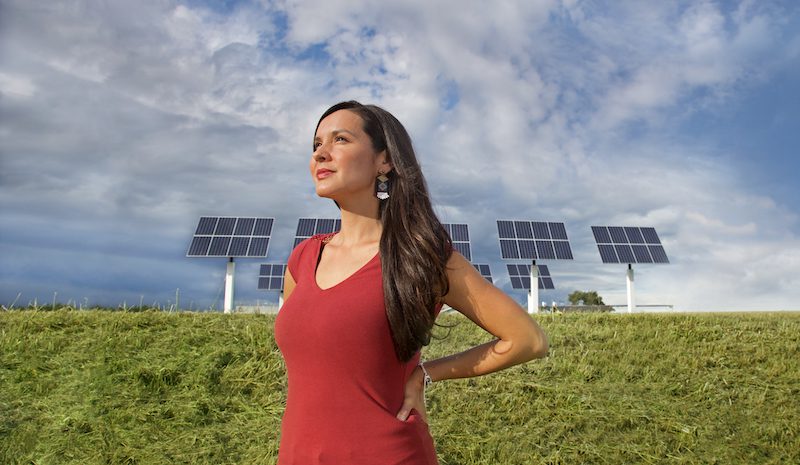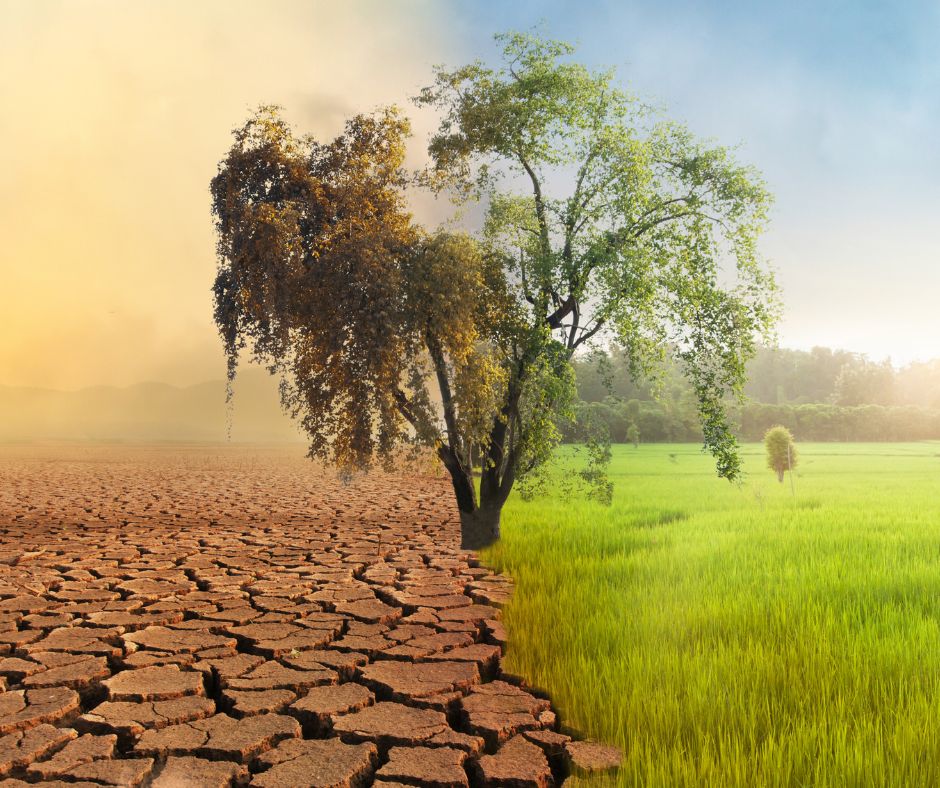This blog was written by Melina Laboucan-Massimo, Founder and Executive Director of Sacred Earth Solar
My name is Melina Laboucan-Massimo. I am from the Lubicon Cree First Nation in Little Buffalo, Alberta.
In 2011, my community experienced what was the second-largest oil spill in the province’s history – 4.5 million litres of crude oil (28,000 barrels) contaminated hectares of an aquifer, beaver ponds, muskeg and dense forest. The pipeline owner – Plains Midstream Canada ULC – later faced three charges under provincial law.
The effects of the spill were disastrous. I remember family members struggling to breathe – intense nausea and burning eyes. Our community closed schools and told kids to stay inside. It was terrifying.
As I watched my family and community members get sick, a harsh reality dawned on me: Even though I was working full-time on climate issues, I was forced to watch a harmful extractive industry poison my community – and I could do nothing to stop it.
I decided I needed to start working on a solution – and find the ‘yes’ to the ‘no.’
There was lots of talk about a ‘transition’ at that time, but I didn’t know of anyone implementing it. In 2013, I returned to university to complete a master’s degree with a research focus on energy transition. By 2015, I successfully completed my first solar implementation in my home community which was Little Buffalo’s first grid-connected solar project that powers our health centre. I quickly learned that there was no how-to guide – I had to teach myself through trial and error. I had to figure out how to bridge the silos that existed in our society – between the renewable energy sector, climate organizations, government policy-makers, project financers, utilities, labour, engineers – the list goes on.
I then launched Sacred Earth Solar, an Indigenous-led organization that works with communities protecting their homelands by bringing solar power to the frontlines of the climate crisis. We work directly with communities and skilled people on the ground – electricians, solar installers, etc. – to usher in the inevitable and desperately needed transition to renewable energy.
I realized that overall, our society does not have the energy literacy required to address the climate crisis – and given the challenges that face us today, this needed to change.
Most people do not know what an energy grid is or how it functions. How is one built – technically, jurisdictionally? Why are some utilities public, some private? Why are some open to working with communities, others less so? What are the different renewable energy technology options for communities, and how do they get built?
Now a decade later, in collaboration with Indigenous-led organizations, communities and other partners, we’ve created something that I would have found hugely helpful back in 2013 – something that finally starts to define what “just transition” really means.
Through our recently launched Just Transition Guide, we make it tangible for people, communities and countries to understand what this transition can look like – on the ground.
This Guide is an offering and a resource for Indigenous Peoples and for all who are looking for pathways towards implementing an equitable transition. It contains valuable success stories, real life examples, and important technical information, which together outline the ways communities can move forward through a Just Transition.
The energy transition is happening all around us, and it’s taking root from the bottom up. Our guide sets the vision of a path forward that’s already being built, but that needs to be accelerated and supported.
While our world transitions to renewable energy from fossil fuels, we must be critical and aware of the impacts of “clean” energy so we do not replicate the same system of harms that have been perpetuated from the previous energy era.
When Canada’s federal government first started talking about legislation to support a just transition – I must admit, I was hopeful. But when the government released the Sustainable Jobs Plan in February 2023 (after two years of consultation), it quickly became clear that the legislation was plagued by features typical of a business-focused colonial government. It focuses on the who (a secretariat, council, etc.) and delineates a simple timeline.
The current Sustainable Jobs Act is a plan to have a plan. It must start to meaningfully explore and represent what’s already happening. In Canada, there are more than 2,500 Indigenous-led renewable energy projects in the works – more than 200 of which are large-scale and revenue-generating. Where are those case studies we need to learn from? The Act in its current form is a missed opportunity, with a top-down, exclusionary approach.
How will the plan work with the communities – largely Indigenous – who are the stewards of the vast majority of Canada’s nature, and who are already working on the transition in question? Outside of utilities, Indigenous Nations are the largest renewable energy asset owners in Canada.
In response, our Just Transition Guide is the how. Focusing on how workers and communities can be a part of the transition – without leaving anyone behind – this guide is about making communities resilient in the face of the climate crisis. Right now, there is an urgency and necessity for Indigenous-led climate solutions grounded in a just transition.
My journey in energy transition started as my attempt to protect my family and community – and other impacted communities – from the devastating environmental and human rights impacts of the fossil fuel industry. My work in this space continues because it is clear that if we don’t figure this out – and soon – the well-being of humans on Earth hangs in the balance.
The transition will be huge. Government’s role is to ensure it is just. To do that, let’s start by making sure the plan is practical and bottom-up – by the people, for the people.







